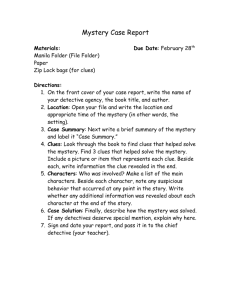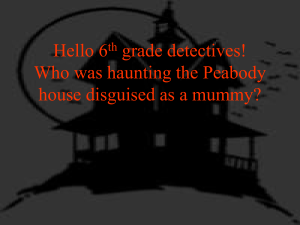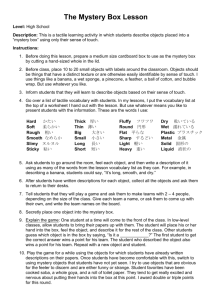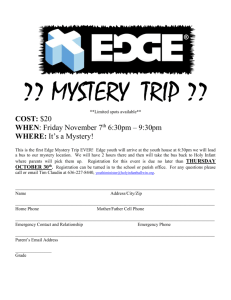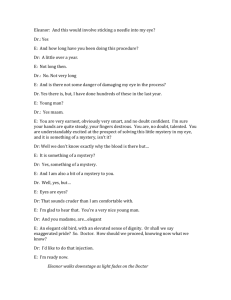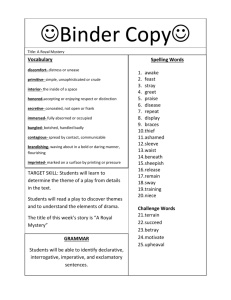Clow,S_Digital Games
advertisement
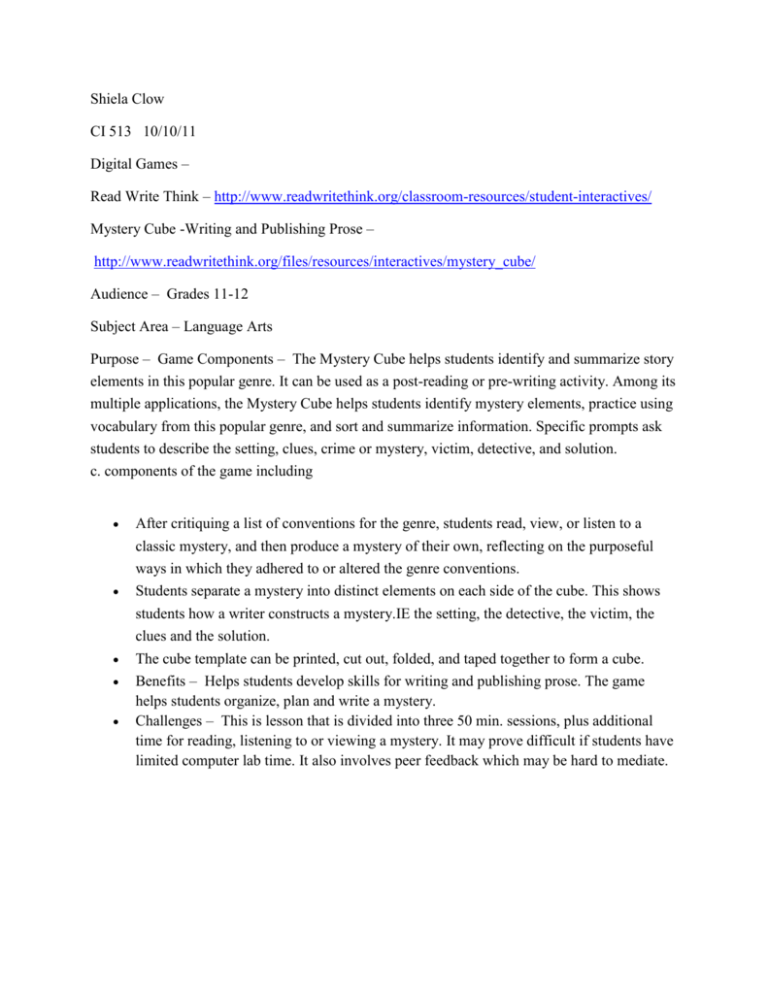
Shiela Clow CI 513 10/10/11 Digital Games – Read Write Think – http://www.readwritethink.org/classroom-resources/student-interactives/ Mystery Cube -Writing and Publishing Prose – http://www.readwritethink.org/files/resources/interactives/mystery_cube/ Audience – Grades 11-12 Subject Area – Language Arts Purpose – Game Components – The Mystery Cube helps students identify and summarize story elements in this popular genre. It can be used as a post-reading or pre-writing activity. Among its multiple applications, the Mystery Cube helps students identify mystery elements, practice using vocabulary from this popular genre, and sort and summarize information. Specific prompts ask students to describe the setting, clues, crime or mystery, victim, detective, and solution. c. components of the game including After critiquing a list of conventions for the genre, students read, view, or listen to a classic mystery, and then produce a mystery of their own, reflecting on the purposeful ways in which they adhered to or altered the genre conventions. Students separate a mystery into distinct elements on each side of the cube. This shows students how a writer constructs a mystery.IE the setting, the detective, the victim, the clues and the solution. The cube template can be printed, cut out, folded, and taped together to form a cube. Benefits – Helps students develop skills for writing and publishing prose. The game helps students organize, plan and write a mystery. Challenges – This is lesson that is divided into three 50 min. sessions, plus additional time for reading, listening to or viewing a mystery. It may prove difficult if students have limited computer lab time. It also involves peer feedback which may be hard to mediate.

